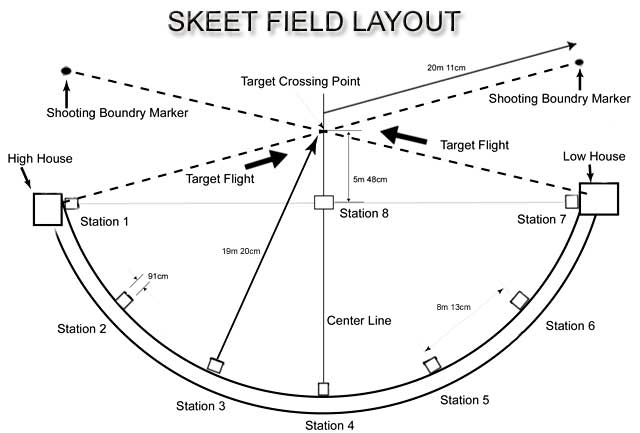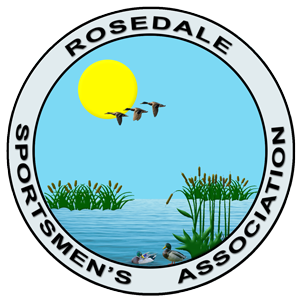
The Skeet Field
Today’s skeet field varies little from its 1920 beginnings. It has eight shooting stations and two trap houses. Seven of the stations are arranged in a half moon between the two trap houses, and one station is directly between them. The high house, on the left side of the field, throws its targets from a trap 10 feet above the ground. The target rises to a height of 15 feet by the time it travels to the center of the field. The low house target, on the right side, leaves the trap house just 3-1/2 feet from the ground. It also rises to a height of 15 feet by the time it reaches the center of the field.
A Round of Skeet
A round of skeet consists of 25 targets, with 17 shot as singles and 8 as doubles. The first miss is repeated immediately and is called an option. If no targets are missed during the round, the last or 25th target is shot at the last station, low house 8. The shooting sequence is as follows:
Stations 1 and 2: High house single;
Low house single; High house/Low house pair
Stations 3, 4, and 5: High house single; Low house single
Stations 6 and 7: High house single; Low house single; Low house/High house pair
Station 8: High house single; Low house single
Skeet is shot in squads of up to five shooters. They move from station to station around the half moon, ending up in the center, at the end of the round.
Any gauge shotgun may be used, of any type, as long as it can fire at least two shots. The preferred shot size is #9, but nothing larger than 7-1/2 should ever be used. Since strength is not a factor, women are able to compete equally with men. Left handed shooters do just as well as right.
Shooting a Practice Round of Skeet
You’ll need to take the following equipment to the field with you:
Shotgun – any gauge, any type, as long as it fires at least two (2) shells
Ammunition – One box of 25 shells, same gauge as your gun
A shell holder you wear to carry your ammo as you move around the field
Ear Plugs – MANDATORY
Eye Protection – MANDATORY
